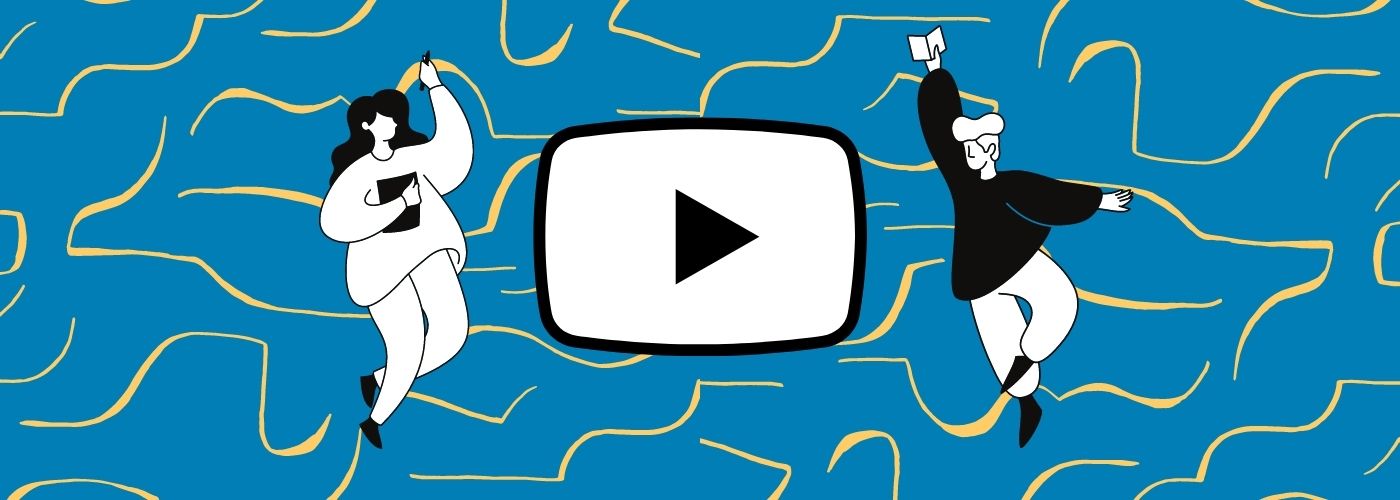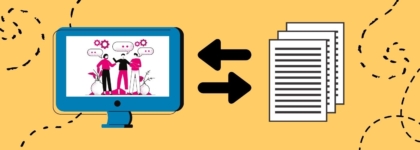How Many People Use Captions and Subtitles?
Updated: November 5, 2022
The Office of Communications (Ofcom), the regulatory body for UK television broadcasting, conducted a 2006 study on how many people use subtitles and subtitle usage by people who are d/Deaf or hard of hearing.
In the UK, “subtitles” are equivalent to what we refer to in the United States as “closed captions” or “subtitles for the deaf and hard of hearing (SDH).” That is, the timed-text displayed on videos that includes both speech and essential non-speech sounds. In this post, we will use the terms “closed captions” and “subtitles” interchangeably.
The Ofcom research study was prompted by the passage of the Communications Act of 2003, which set forth subtitling quotas for UK broadcast television and required data to prove how such accommodations are helpful to viewers with disabilities.
The pleasant surprise? Many television viewers benefit from subtitles even if they are not d/Deaf or hard of hearing.
Want to learn more? Read about the benefits of captioning ✅
How Many People Use Subtitles According to the Ofcom Study Results
The Ofcom study aimed to model user benefits, usage, and preferences for access services, collecting stats about user awareness of closed captioning and the number of people in the UK who are d/Deaf or hard of hearing.
Ofcom found that 7.5 million people in the UK (18% of the population) used closed captions. Of that 7.5 million, only 1.5 million were d/Deaf or hard of hearing.
This suggests that 80% of television viewers used closed captions for reasons other than hearing loss, and that closed captions benefit many more than just those who require them for accessibility.
In an effort to determine how many people use subtitles and why, Ofcom asked participants what motivates them to use subtitles. Ofcom found that “subtitles were regarded as generally very effective in making programmes understood.”
In 2006, the BBC even referenced the Ofcom study and suggested that the average TV viewer could benefit from closed captions, particularly as the nature of video changes.
With the dominance of reality TV, the dialogue is becoming less articulate and more unscripted. In addition, more and more shows feature heavy accents that can be hard to understand. For these reasons and more, closed captions could improve comprehension for all viewers.
Why should you transcribe and caption your videos? Download our ebook to learn more ➡️
What Have We Learned Since the Ofcom Study?
In the years since Ofcom’s 2006 study, many other studies and papers have corroborated Ofcom’s suggestion that captions can improve understanding and benefit all viewers. For example, in a 2015 study conducted by 3Play Media and Oregon State University Ecampus Research Group on student use and perception of closed captions, we found that students not reporting disabilities use captions almost as frequently as students reporting disabilities. When asked why captions are helpful, respondents expressed strong agreement that captions help students focus, retain information, and comprehend academic material.
Another paper published in 2015 in Policy Insights from the Behavioral and Brain Sciences by Morton Ann Gernsbacher also found corroborating evidence, citing over 100 empirical studies.
“The empirical evidence is clear: Captions, also known as same-language subtitles, benefit everyone who watches videos,” Gernsbacher writes. “More than 100 studies document that captioning a video improves comprehension of, memory for, and attention to videos, for children, adolescents, college students, and adults.”
In addition to research studies, many movie-goers have anecdotally praised captions, even if they’re not d/Deaf or hard of hearing. For example, in a 2020 Washington Post article by Lauren Michele Jackson, the writer discusses using captions to better understand strong accents, such as those featured in Games of Thrones.
“Struggling to track its multiplying medley of tones and inflections, I found I was missing minor details about places and names, along with the all-too-rare moments of wit,” Jackson writes. “Once I turned [captions] on, though, they stayed on, for any and everything on television. My hearing ability, I soon realized, had made me lazy. I took for granted a breadth of comprehension I never possessed.”
Jackson’s observations, while anecdotal, express strong agreement with the evidence-backed finding that captions are beneficial for everyone.
Discover 8 benefits of captioning and transcribing online video ➡️
Why Viewers Who Are Not Hard of Hearing Use Closed Captions
The Ofcom study clearly indicates that once a user is aware of closed captions, their usefulness is universal. Here are just a few examples of the benefits of subtitles:
- Viewers who know English as a second language benefit from closed captions, because they make it easier to follow along with the speech.
- Closed captions help with comprehension of dialogue that is spoken very quickly, with accents, mumbling, or background noise.
- Closed captions provide viewers clarity on mentions of full names, brand names, or technical terminology.
- Closed captions help maintain concentration and engagement, which can provide a better experience for viewers with learning disabilities, attention deficit disorder, or autism.
- Closed captions allow viewers to watch videos in sound-sensitive environments, like offices and libraries.
Not convinced that your videos need closed captions? Check out this free guide 👇
This post was originally published on May 27, 2014, by Lily Bond, as “Ofcom Study: 80% of People Who Use Closed Captions Are Not Hard of Hearing” and has been updated.







